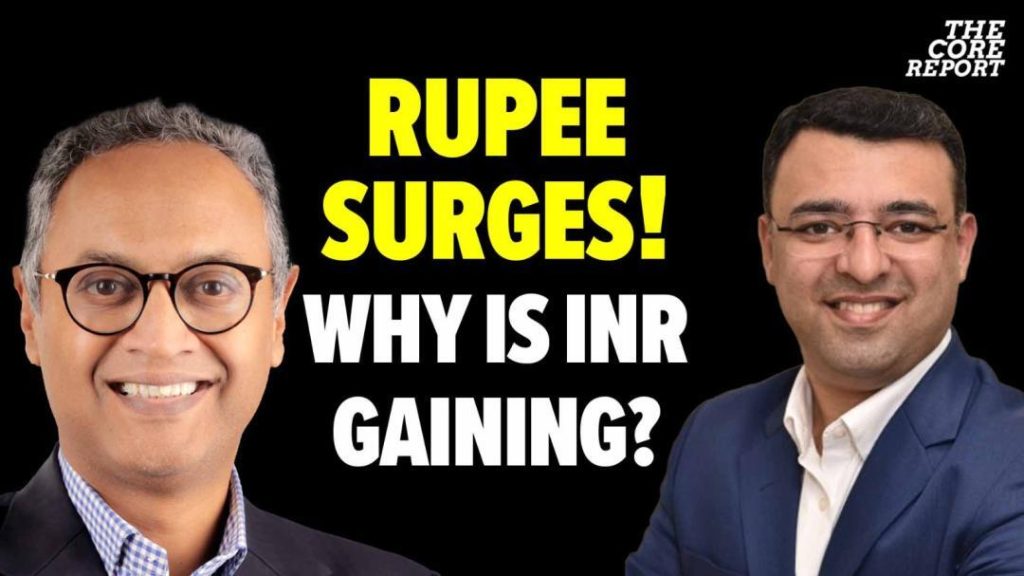
Indian Rupee Rises Against Dollar: A Welcome Respite Amidst Global Uncertainty
The Indian rupee has been on a roll lately, surging to a one-week high against the US dollar. This unexpected turn of events has sent shockwaves across the financial markets, with analysts attributing the rupee’s rise to a combination of factors, including dollar sales from foreign banks and a weaker USD. In this blog post, we’ll delve into the details of this remarkable turnaround and explore what this means for the Indian economy.
A One-Week High: The Rupee’s Unlikely Rise
The Indian rupee, which had been struggling to stay afloat in recent months, has suddenly found itself on the upswing. On Tuesday, the rupee touched a one-week high of 74.54 against the US dollar, a significant departure from its earlier decline. This unexpected rally has left many market watchers wondering what triggered this sudden shift in fortunes.
Dollar Sales from Foreign Banks: A Key Factor
One of the primary drivers of the rupee’s rise is the dollar sales from foreign banks. According to a report by Bloomberg, foreign banks have been selling dollars and buying rupees in recent days, which has helped to boost the currency’s value. This is a significant development, as foreign banks have traditionally been major players in the currency markets, influencing exchange rates with their buying and selling activities.
Weaker USD: A Global Phenomenon
Another factor contributing to the rupee’s rise is the weaker USD. The US dollar has been experiencing a decline in value against many major currencies in recent months, including the euro, the yen, and the pound. This weaker USD has made the rupee more attractive to foreign investors, who are increasingly looking to diversify their portfolios and take advantage of the rupee’s relative strength.
Chinese Yuan and Japanese Yen: A Tale of Two Currencies
The rupee’s rise has also been influenced by the performance of other regional currencies, including the Chinese yuan and the Japanese yen. Both of these currencies have been experiencing a decline in value against the dollar, which has made the rupee more attractive by comparison. The yuan, in particular, has been struggling to maintain its value, with the Chinese government implementing a series of measures to prop up the currency.
RBI’s Strategic Interventions: A Safe Harbor for the Rupee
Analysts credit the Reserve Bank of India’s (RBI) strategic interventions for stabilizing the rupee amidst earlier fears of depreciation. The RBI has been actively managing the rupee’s value, intervening in the foreign exchange markets to prevent excessive fluctuations. This proactive approach has helped to restore confidence in the rupee, with investors increasingly willing to take on rupee-denominated assets.
What This Means for the Indian Economy
The rupee’s rise against the dollar has significant implications for the Indian economy. A stronger rupee can help to reduce the cost of imports, which can lead to lower inflation and increased consumer spending. It can also make India a more attractive destination for foreign investors, who are increasingly looking to tap into the country’s rapidly growing markets.
However, the rupee’s rise also presents challenges for Indian exporters, who may struggle to compete with foreign rivals in a stronger rupee environment. The RBI will need to carefully balance its monetary policy to ensure that the rupee’s rise does not lead to a decline in exports.
Conclusion
The Indian rupee’s rise against the dollar is a welcome development for the Indian economy, driven by a combination of factors including dollar sales from foreign banks and a weaker USD. The rupee’s performance has also been supported by the Chinese yuan and Japanese yen, with the RBI’s strategic interventions playing a key role in stabilizing the currency. As the rupee continues to rise, it will be important for the RBI to carefully manage the currency’s value to ensure that it does not lead to a decline in exports.
News Source:






